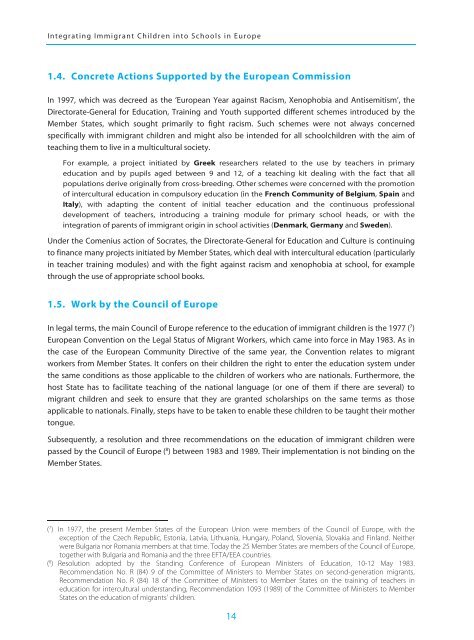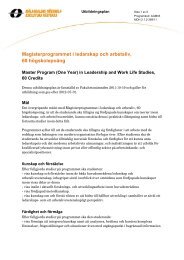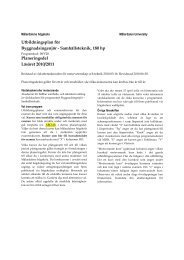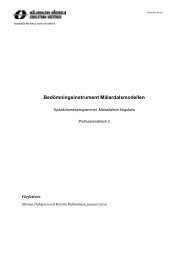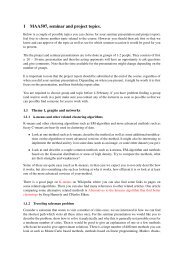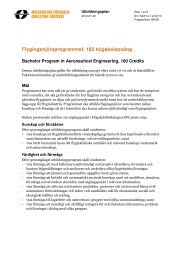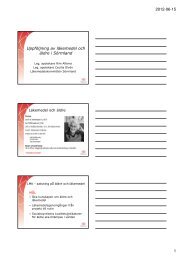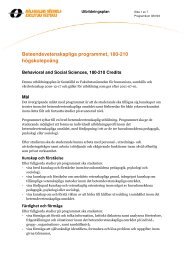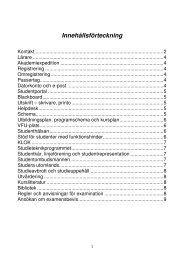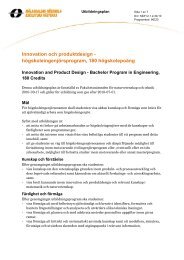Integrating Immigrant Children into Schools in Europe
Integrating Immigrant Children into Schools in Europe
Integrating Immigrant Children into Schools in Europe
You also want an ePaper? Increase the reach of your titles
YUMPU automatically turns print PDFs into web optimized ePapers that Google loves.
<strong>Integrat<strong>in</strong>g</strong> <strong>Immigrant</strong> <strong>Children</strong> <strong><strong>in</strong>to</strong> <strong>Schools</strong> <strong>in</strong> <strong>Europe</strong>1.4. Concrete Actions Supported by the <strong>Europe</strong>an CommissionIn 1997, which was decreed as the ‘<strong>Europe</strong>an Year aga<strong>in</strong>st Racism, Xenophobia and Antisemitism’, theDirectorate-General for Education, Tra<strong>in</strong><strong>in</strong>g and Youth supported different schemes <strong>in</strong>troduced by theMember States, which sought primarily to fight racism. Such schemes were not always concernedspecifically with immigrant children and might also be <strong>in</strong>tended for all schoolchildren with the aim ofteach<strong>in</strong>g them to live <strong>in</strong> a multicultural society.For example, a project <strong>in</strong>itiated by Greek researchers related to the use by teachers <strong>in</strong> primaryeducation and by pupils aged between 9 and 12, of a teach<strong>in</strong>g kit deal<strong>in</strong>g with the fact that allpopulations derive orig<strong>in</strong>ally from cross-breed<strong>in</strong>g. Other schemes were concerned with the promotionof <strong>in</strong>tercultural education <strong>in</strong> compulsory education (<strong>in</strong> the French Community of Belgium, Spa<strong>in</strong> andItaly), with adapt<strong>in</strong>g the content of <strong>in</strong>itial teacher education and the cont<strong>in</strong>uous professionaldevelopment of teachers, <strong>in</strong>troduc<strong>in</strong>g a tra<strong>in</strong><strong>in</strong>g module for primary school heads, or with the<strong>in</strong>tegration of parents of immigrant orig<strong>in</strong> <strong>in</strong> school activities (Denmark, Germany and Sweden).Under the Comenius action of Socrates, the Directorate-General for Education and Culture is cont<strong>in</strong>u<strong>in</strong>gto f<strong>in</strong>ance many projects <strong>in</strong>itiated by Member States, which deal with <strong>in</strong>tercultural education (particularly<strong>in</strong> teacher tra<strong>in</strong><strong>in</strong>g modules) and with the fight aga<strong>in</strong>st racism and xenophobia at school, for examplethrough the use of appropriate school books.1.5. Work by the Council of <strong>Europe</strong>In legal terms, the ma<strong>in</strong> Council of <strong>Europe</strong> reference to the education of immigrant children is the 1977 ( 7 )<strong>Europe</strong>an Convention on the Legal Status of Migrant Workers, which came <strong><strong>in</strong>to</strong> force <strong>in</strong> May 1983. As <strong>in</strong>the case of the <strong>Europe</strong>an Community Directive of the same year, the Convention relates to migrantworkers from Member States. It confers on their children the right to enter the education system underthe same conditions as those applicable to the children of workers who are nationals. Furthermore, thehost State has to facilitate teach<strong>in</strong>g of the national language (or one of them if there are several) tomigrant children and seek to ensure that they are granted scholarships on the same terms as thoseapplicable to nationals. F<strong>in</strong>ally, steps have to be taken to enable these children to be taught their mothertongue.Subsequently, a resolution and three recommendations on the education of immigrant children werepassed by the Council of <strong>Europe</strong> ( 8 ) between 1983 and 1989. Their implementation is not b<strong>in</strong>d<strong>in</strong>g on theMember States.( 7 ) In 1977, the present Member States of the <strong>Europe</strong>an Union were members of the Council of <strong>Europe</strong>, with theexception of the Czech Republic, Estonia, Latvia, Lithuania, Hungary, Poland, Slovenia, Slovakia and F<strong>in</strong>land. Neitherwere Bulgaria nor Romania members at that time. Today the 25 Member States are members of the Council of <strong>Europe</strong>,together with Bulgaria and Romania and the three EFTA/EEA countries.( 8 ) Resolution adopted by the Stand<strong>in</strong>g Conference of <strong>Europe</strong>an M<strong>in</strong>isters of Education, 10-12 May 1983.Recommendation No. R (84) 9 of the Committee of M<strong>in</strong>isters to Member States on second-generation migrants,Recommendation No. R (84) 18 of the Committee of M<strong>in</strong>isters to Member States on the tra<strong>in</strong><strong>in</strong>g of teachers <strong>in</strong>education for <strong>in</strong>tercultural understand<strong>in</strong>g, Recommendation 1093 (1989) of the Committee of M<strong>in</strong>isters to MemberStates on the education of migrants’ children.14


